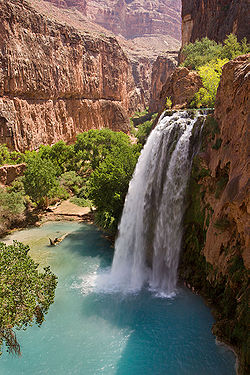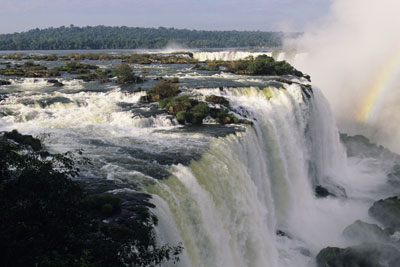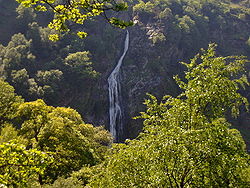Examples of a cascade (left) and a cataract
(right)
Now that we've explained
the terminology, let's examine some different types of waterfalls.
The most basic and recognizable type of waterfall is the
plunge waterfall. This
happens simply when a
river spills out water over a ledge, and
the water descends vertically without coming into contact with any
of the rock on the way down -- it just crashes right into the
plunge pool. This type of waterfall would take longer to retreat,
since the hard rock over which the water is flowing is more
resistant to erosion.

A
block or
sheet waterfall is formed
from a wide river -- when the water spills over the edge, it looks
like a big sheet, especially if the flow isn't broken by any stray
rocks protruding from the back-wall. A block waterfall is usually
wider than it is high. Similar in nature is the
curtain waterfall, which
is simply taller than it is wide, but still looks like a long
sheet.

Horsetail waterfalls are in constant or semi-constant
contact with rocks, which may erode faster than other types because
of constant runoff.

Because the geography
of the land is never limited, a waterfall can be one of these
things or have any combination of them. For instance, a punchbowl
waterfall might descend into a small plunge pool, but the plunge
pool might quickly lead to another ledge where the water descends
as a plunge waterfall. These waterfalls are generally called
tiered. There are
seemingly endless possibilities, which is probably the biggest
reason people look for and are interested in new
waterfalls.